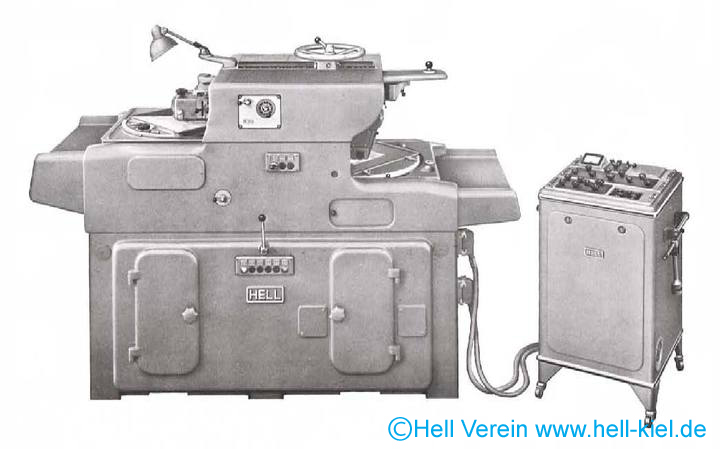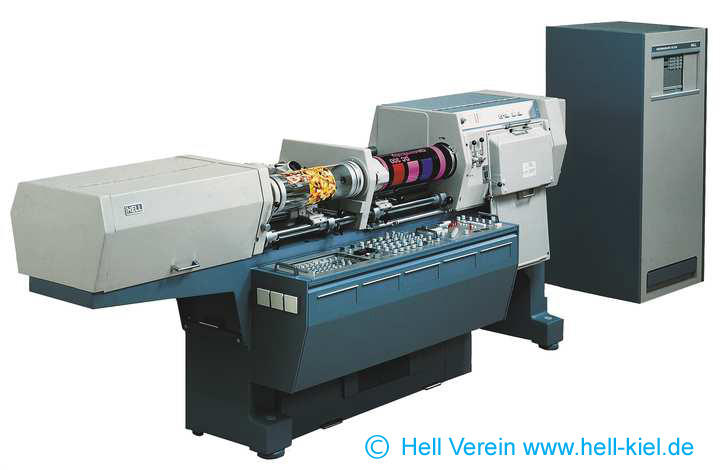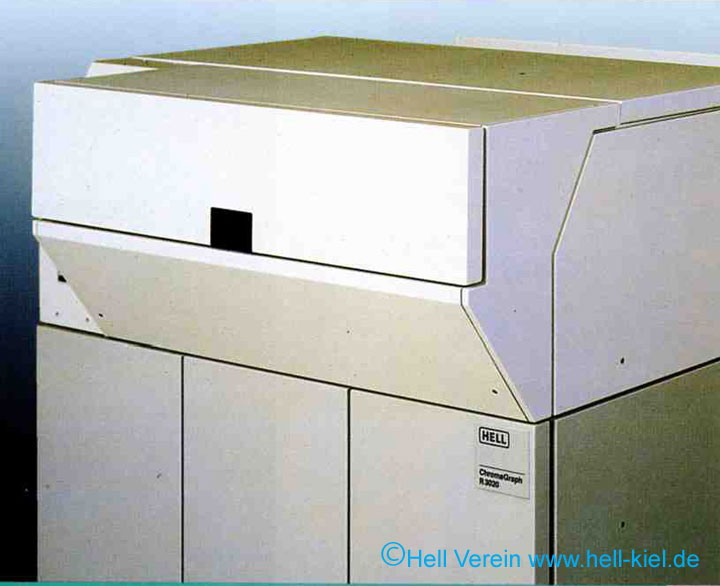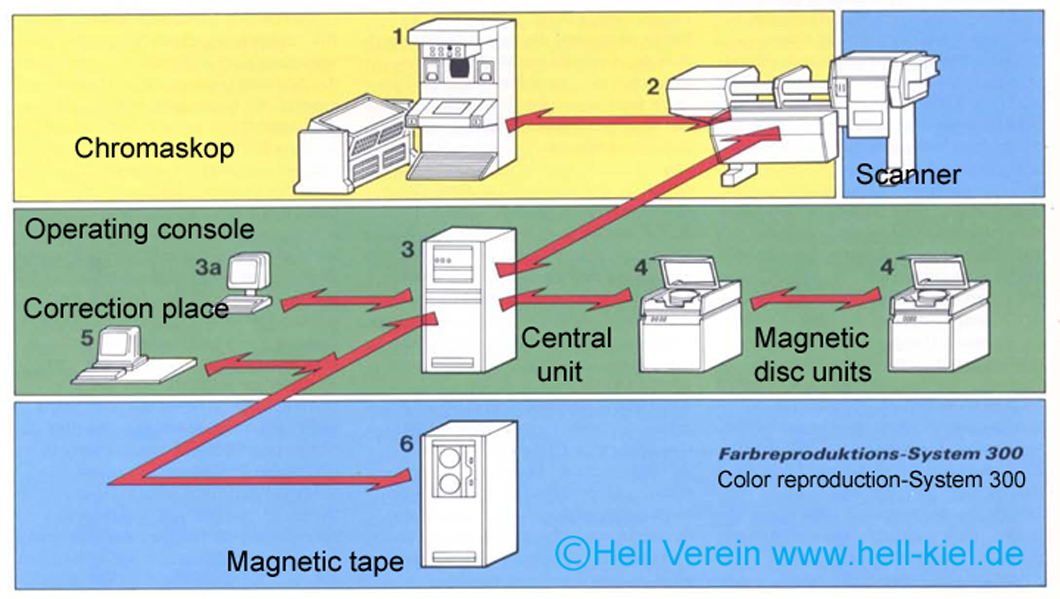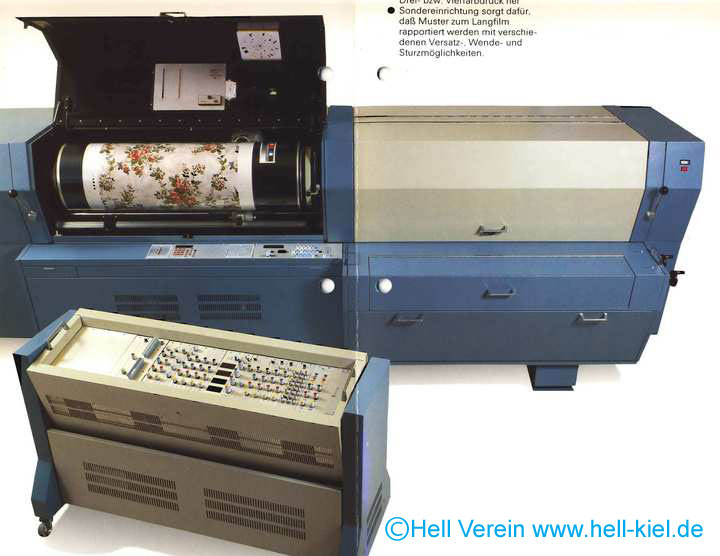Reproduction technology
How printing is done?
A short introduction to printing technology (German)
"für uns alle" No. 23
|
Gravure devices |
The gravure devices developed by Hell since 1951, which were also named Klischograph, engrave pictures and text into a printing form for letterpress printing or for gravure printing. Still today, rotogravure printing cylinders for high volume printing of magazines, catalogues, and packaging material are produced with Helioklischograph machines.
|
||
|
Scanner |
The first drum scanners were built by Hell since 1966. These scanners were not linked to a computer, since pictures could not yet be stored digitally. Available memory devices had not enough memory capacity, and they were too expensive and too slow. Only beginning in 1978,
the first drum scanners could digitize pictures and store them in a computer.
|
||
|
|
|||
|
Recorder |
The development of repro systems enables the spatially separated work of "scanning" and "film seperation exposure". Thus, "only" scanners and "only" recorders are developed. |
||
|
System |
In the 1970s, the first fast computers and external fast data storage devices with large data volumes were created. From 1977, Hell started thinking about the development of repro systems. The first system is exhibited at the IPEX as early as 1980. |
||
|
Scanner:
special application
|
Hell developed special scanners for textile printing, which scan a design pattern drawn by a textile designer in order to generate the color separations required for textile printing. Also for weaving fabrics and carpets systems were developed, which generated from the scanned pattern the control data for a loom. | ||
|
|
|
Additional articles on the development of reproduction technology can be found under "Multicolor printing"
|

